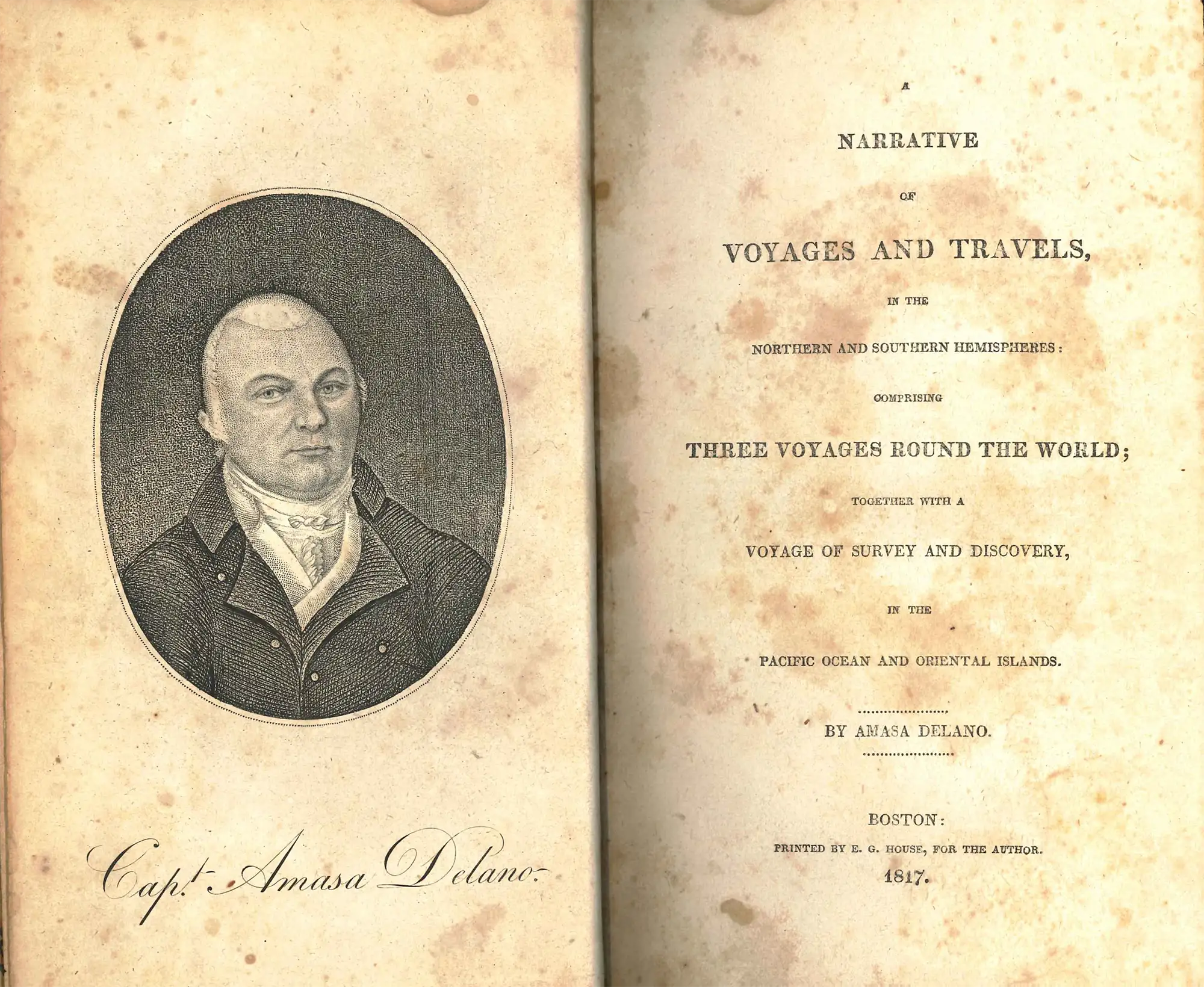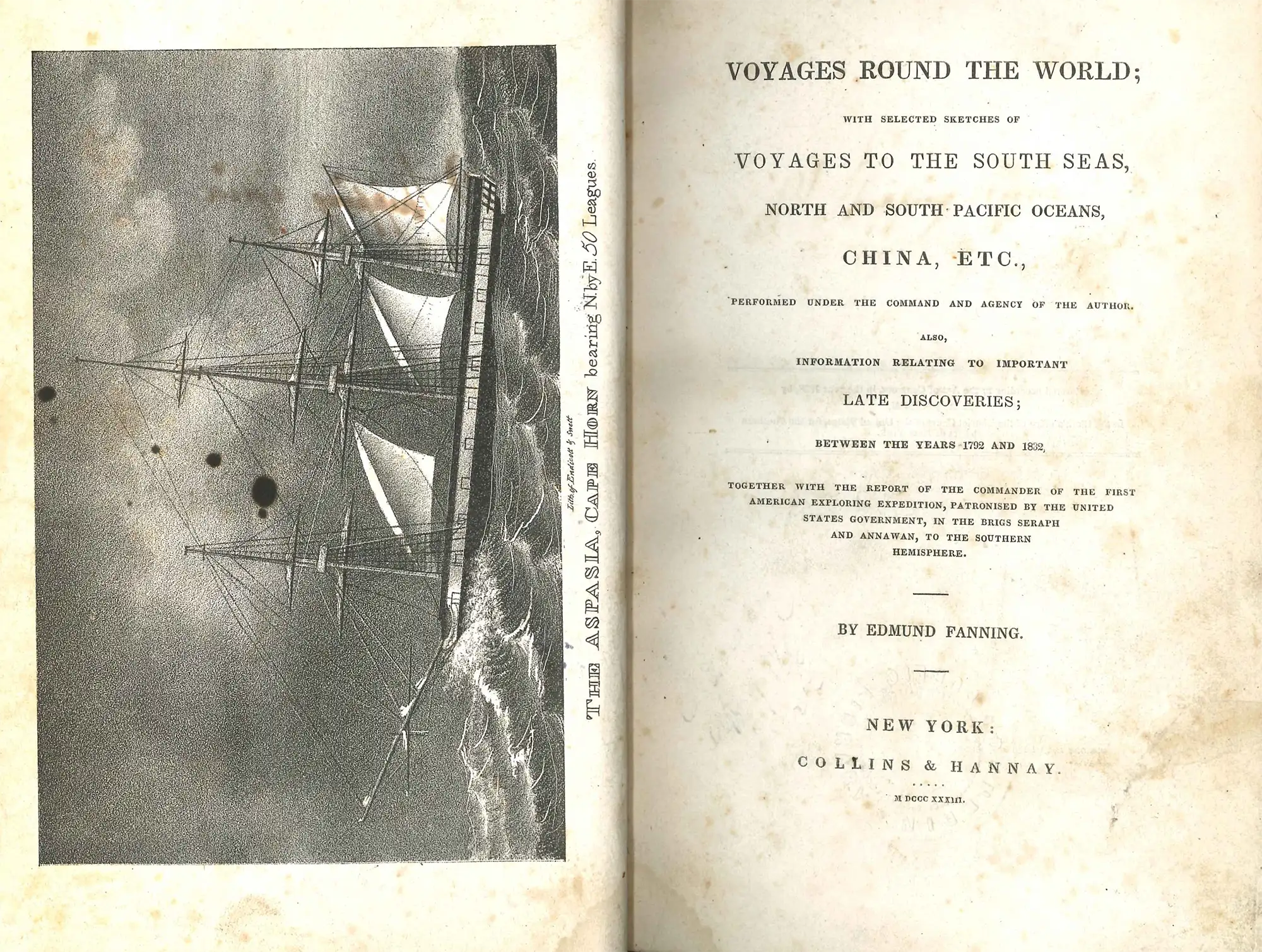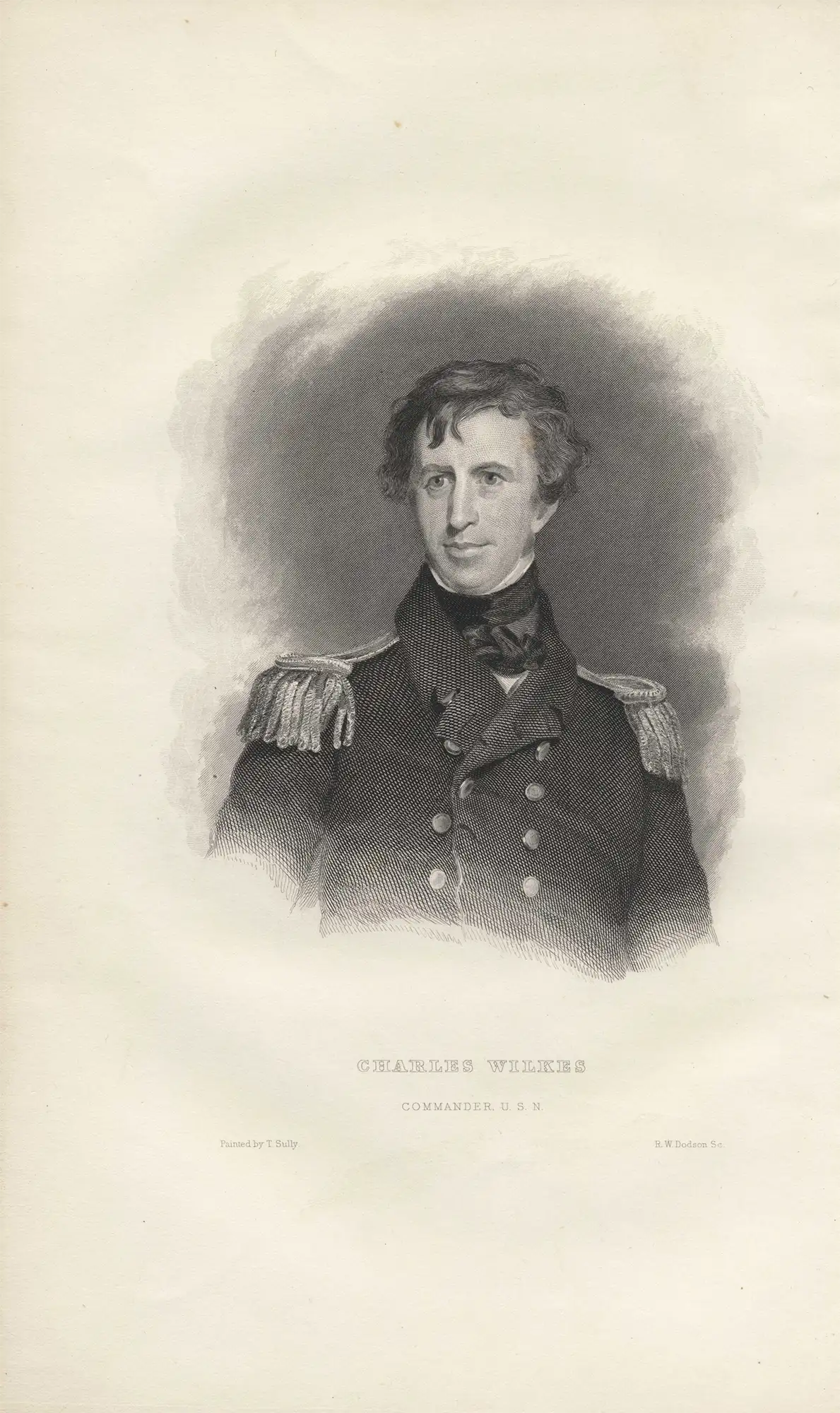Case W5
- American Voyages in American Waters

Amasa Delano. A Narrative of Voyages and Travels in the Northern and Southern Hemispheres. Boston: Printed by E.G. House for the author, 1817.
This is the first edition of an account by an American from Duxbury, Massachusetts, Amasa Delano (1763-1823), of his three voyages to various parts of the Pacific between 1790 and 1807.
In 1804 he landed at Van Diemen’s Land (Tasmania), then sailed through Bass Straight past New Zealand’s south west cape hoping to examine the Snares Islands, which had in 1791 been so named by George Vancouver because he thought they were a shipping hazard. Unable to land, Delano sailed eastwards for the Bounty Islands which had been discovered by Bligh in 1788 shortly before the mutiny on the Bounty.

Amasa Delano. A Narrative of Voyages and Travels in the Northern and Southern Hemispheres. Boston: Printed by E.G. House for the author, 1817.
Open image in new window

Edmund Fanning. Voyages Round the World: with Selected Sketches of Voyages to the South Seas, North and South Pacific Oceans, China, etc. New York: Collins & Hannay, 1833.
This is the first edition of the memoirs of Edmund Fanning (1769-1841), an American explorer and sea captain known as the ‘Pathfinder of the Pacific’. A successful trader from Connecticut, Fanning made his fortune in the China trade, exchanging seal skins for silks, spices and tea, and selling them in New York City. In 1798 he discovered three Pacific islands known collectively as the Fanning Islands; today Fanning and Washington Islands forms part of Kiribati, while Palmyra Island is an incorporated territory of the US.
Between 1792 and 1832, Fanning either captained or directed more than 70 voyages and commercial expeditions. He was instrumental in the authorising by Congress of the United States Exploring Expedition (Wilkes Expedition) of the Pacific in 1838-42.

Edmund Fanning. Voyages Round the World: with Selected Sketches of Voyages to the South Seas, North and South Pacific Oceans, China, etc. New York: Collins & Hannay, 1833.
Open image in new window

Charles Wilkes. Narrative of the United States Exploring Expedition. Vol. 1. Philadelphia: Lea and Blanchard, 1845.
The United States Exploring Expedition of 1838-1842 was an exploring and surveying expedition of the Pacific Ocean and surrounding lands led by Charles Wilkes (1798-1877).
The expedition was of importance to the growth of science in America, particularly in the field of oceanography. It was also marked by armed clashes with Pacific Islanders, notably in July 1840 at Malolo, where numerous Fijian warriors were killed.
Three ships from the expedition visited the Bay of Islands between February and April 1840, and some of the crew witnessed the ceremonies at the initial signing of the Treaty of Waitangi. Wilkes’ account of the topography, settlements and inhabitants of the area is written in often unflattering detail.
Wilkes’ Narrative was first published in 1844. The displayed book is the first of five volumes published in 1845 in a run of 1,000 copies.

Charles Wilkes. Narrative of the United States Exploring Expedition. Vol. 1. Philadelphia: Lea and Blanchard, 1845.
Open image in new window


